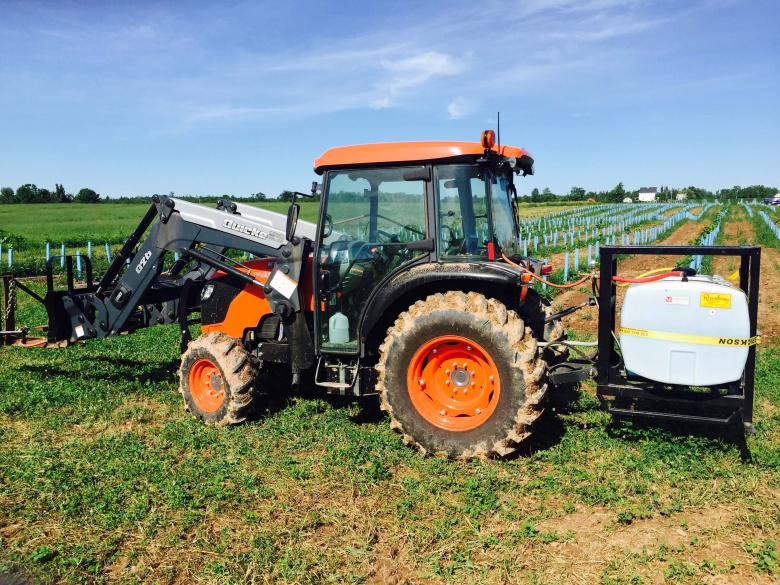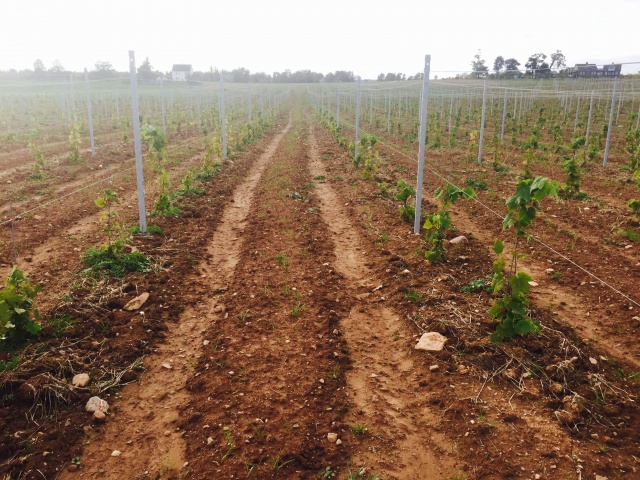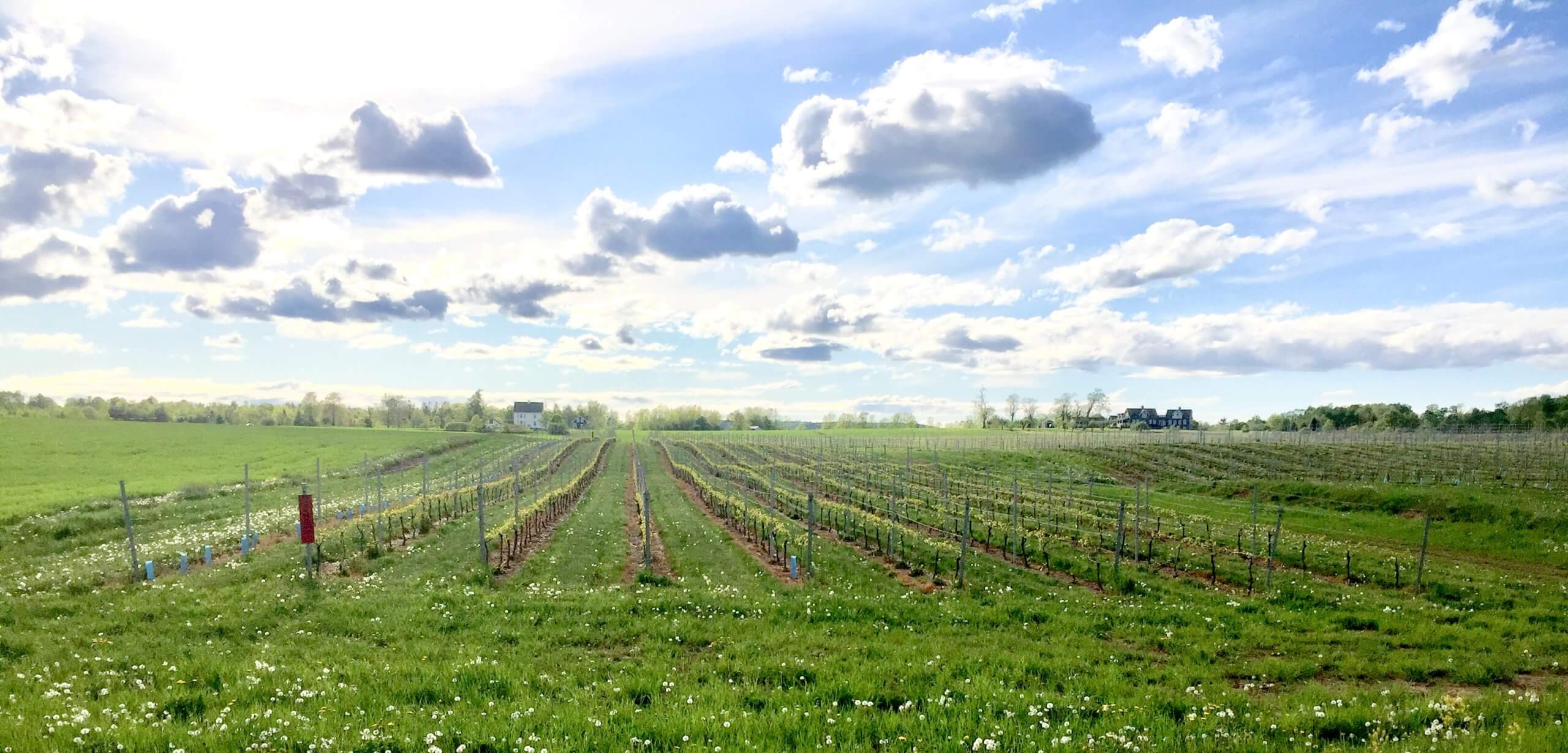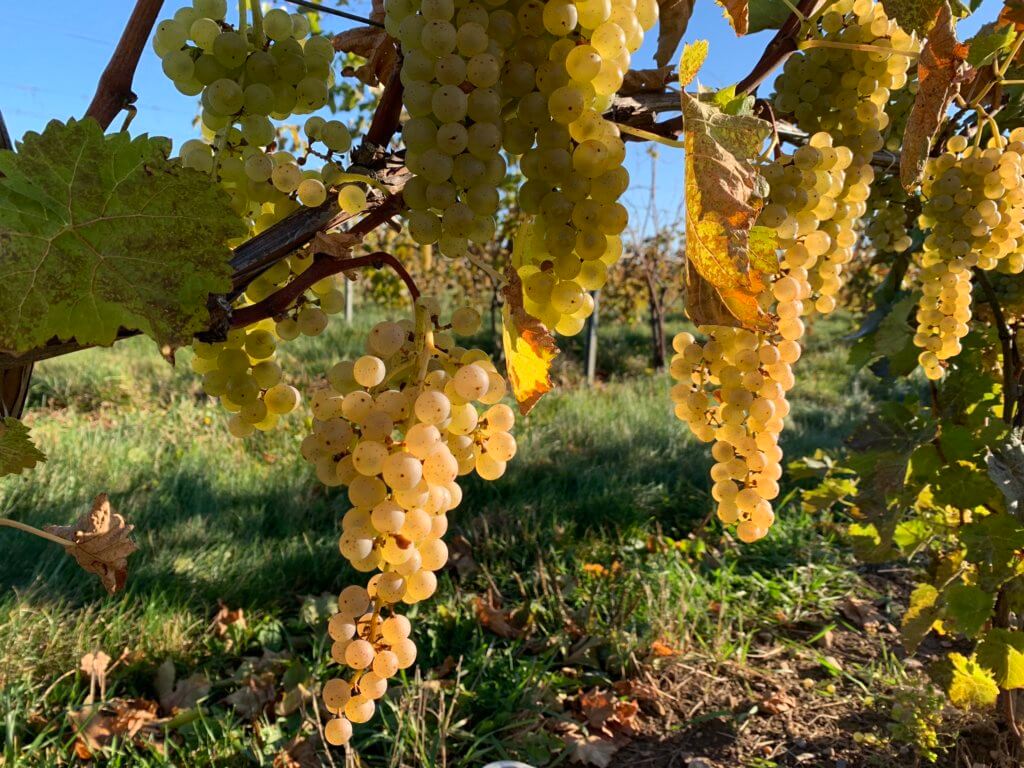Johnston Vineyards (JV) started working with LP Consulting Solutions (lise.leblanc@eastlink.ca; phone 902-256-2636) in 2015 to develop a NMP (nutrient management plan) and to ask questions about the soil. Lise charges 1500$ for a comprehensive NMP which is fully refunded by the Nova Scotia Department of Agriculture (NSDA) via the Home Grown Success Program (Home Grown Success website) (contact Andrew King at 1-902-896-2468) which plans annual funding from 2013-2018. After completion of the first NMP, Lise recommends a second one in 3 years. The second plan is refunded to a maximum of 600$. Applications to Home Grown Success for 2015 were accepted from April 1-31/2015 and it can be expected that the same acceptance period (April 1-31) will exist for 2016.
Lise’s company takes soil samples at 6 inches of depth in multiple regions of the vineyard and charged 345$ to obtain 20 samples. The samples should correspond to the grape variety. These samples were sent to NSDA Laboratory Services (902-893-6565) in Truro. The NSDA fee for analyzing 20 samples was 273$. This could be included in the Home Grown Success program if Lise’s bill was <1500$. Lise provides a handout that tells you normal values for just about every crop except grapes, but she will meet with you before preparing a report and give you information about conditions for grapes.The most important is pH which is nearly always too low in NS. pH at JV before amendment with lime was around 5 (Soil Testing 2015). One ton of lime/ha should raise the pH by .1. You can see that a lot of lime is required.

JV applied lime at a rate of 6 tons/hectare in 2014. pH rose from 5.13 to 5.48 in one block. Applying more at one time is not recommended since the lime has a limited capacity to soak into the soil and runoff occurs. Repeat lime application can take place in 6 months. The goal is to get the pH to 6.5. This makes up for a lot of other flaws in the soil. Trucking was provided by Jeff O’Leary of Riverside Custom Trucking (902-790-0508) located in Falmouth. Cost of calcitic lime was 585$/truckload (25 tons) hauled from Middle Musquodoboit to Falmouth. The lime cost 1000$/25 tons and was supplied by Mosher Limestone Company (902-568-2654). A higher potency lime is available from Antigonish Limestone which is owned and trucked by Bernie Landry 902-870-4501. The cost of trucking to Falmouth from Antigonish was prohibitive. Wood ash raises pH quickly and transiently. It needs to be obtained from a company that has a CFIA label. This is only available from Northern NB. A CFIA label ensures that high metal content is ruled out and that the ash has sufficient liming properties.
Phosphorus and potassium are essential nutrients that can be normalized by applying commercial fertilizer. Lise provides a formula that Scotia Gold mixes and delivers in 25 Kg bags. To supplement the 14 acres that were planted in June 2015 she recommended 1.7 tons of 0-28-18 that is made with TSP/SOP (triple superphosphate/sulfate of potash). This was applied in the late fall on frozen ground. Nitrogen was not included because it would not be absorbed in the absence of vine growth. Soil phosphorus was about 150 kg/ha and should be 300. Potassium was about 200 kg/ha and should be 300. Nitrogen will be supplemented in the spring by ploughing under legumes planted in the spring.
Chicken manure was recommended as a good, cheap source of P2O5 and K2O but contains a lot of nitrogen and should only be spread on planted vineyard in very limited quantity. However, it can be spread more liberally on unplanted vineyard as a source of all 3 fertilizer components (1-1-1). It was purchased from Andre Merks (902-679-7632) in Avonport. Thirty tons comes available every week and is trucked by Jeff O’Leary. Fresh manure will supply more P2O5 and K2O than composted manure. Broiler chickens produce more potent manure than layers. An application rate of 8 tons/acre of fresh layer chicken manure will provide 161 kg/ha of P2O5 and 393 kg/ha of P2O5. If only chicken compost is available apply 10 tons/acre. This will be spread on frozen ground if there is no snow. Otherwise it will have to wait until spring.









